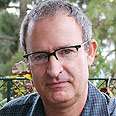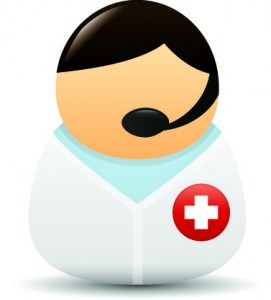Healthcare with Confidence
AIDS is an acquired immunodeficiency syndrome, a combination of symptoms that occur due to a failure of the immune system after infection with HIV (the human immunodeficiency virus).

Dr. Itzchak Levy – Leading Israeli infectious disease expert, Director of HIV/AIDS Unit, Chaim Sheba Medical Center, Tel Hashomer.
Despite the fact that the disease remains incurable in Israel it has successfully controlled due to competent approach of our staff and the latest generation of drugs.
AIDS was discovered in the West in the late 70s of the 20th century and has since become one of the most studied human diseases. The virus was first identified in 1981. In 2008, researchers Francoise Barre-Sinoussi and Luc Montagnier from France were awarded the Nobel Prize in Physiology and Medicine for the discovery of HIV, which causes AIDS.
The life expectancy of HIV-infected patients by Western standards although lower but high enough, and they can reach old age, even if they were infected at a very young age.
Syndrome disease is named because it affects many systems of the body, but has no definite symptoms.
Immunodeficiency – a group of diseases which arises due to severe dysfunction of the immune system.
Acquired, because the disease is not inherited but is caused by a virus.
HIV infects white blood cells whose job is to identify bacteria, viruses and cancer cells in the body. Thus, the human immune system does not receive the “order” to attack bacteria, viruses, and other abnormal cells. Self-defense of the organism effectively removes viruses, and the patient in the end may die from diseases such as influenza and pneumonia, for example, which the body in a healthy condition can handle easily.
Approximately 50% – 80% infected people show symptoms of influenza during the first two months after infection, indicating a first experience of the immune system fight the virus (inflammation). Symptoms include fever, nausea, and skin rashes. Additionally, may develop mild meningitis.
The duration of the incubation step is difficult to predict. It can vary from two to 15 years. During this phase the carrier does not feel any malaise, and without treatment the virus multiplies rapidly, but the number of T cells does not drop below 500 cells per microliter, so that the immune system is still able to successfully deal with the secondary infections that attack the body. The incubation period is different in different individuals, and depending on the strains present in the body, the general state of the immune system of the patient’s genetic profile or exposure to infection.
Symptomatic phase begins when the number of T cells falls below 500 cells per microliter. In this early phase, the virus affects proteoglycans komponnty major innate immune system. Since proteoglycans are the main obstacle to pathogens, the immune capacity of the body deteriorates.
Then the virus enters the white blood cells that is displayed on their membrane receptor called CD4. Cells that meet these criteria are monocytes, dendritic cells, and most importantly, helper T-lymphocytes. The virus enters the upper part of a membrane receptor, and then enters the cell.
Virus replication mechanism utilizes lymphocytes, whose action causes the death of cells. New virus causes destruction of the membrane of lymphocytes.
During the first months after the infection the immune system tries to cope with the virus, and also produces B cells which in turn produce antibodies that bind to the virus, and lead to breakage.
In the blood of a patient, an AIDS patient is determined CD4 + lymphocyte count less than 200 cells per microlitre, however, secondary infections and symptoms manifested already earlier (at 500 cells per microlitre) as indicated above.
About 80% of untreated AIDS patients die within five years. Many die before. But those who held regular treatment can live with the disease for many years.
Infection and disease
The fungus Candida Albicans is one of the first pathogens attacking AIDS.
AIDS is the culmination of a suppression of the immune system, resulting in infections with opportunistic pathogens attack the body in a state of immunodeficiency.
Initially infection caused by the fungus Candida Albicans, cause oral lesions, mild pneumonia, and inflammation of the esophagus. Furthermore, it may be tuberculosis infection, Crohn’s disease. Recurrence of tuberculosis is much more common among people living with HIV and their mortality is much higher.
Varicella zoster virus and herpes simplex. Herpes is a sexually transmitted disease herpes. Two other herpes virus family cytomegalovirus and Epstein-Barr virus (Epstein-Barr, EBV). Last virus can also cause Burkitt’s lymphoma, a type of cancer of the lymphatic system. Kaposi’s sarcoma, a cancer of the blood vessels and connective tissue, together with AIDS occur rarely. Cancer is often caused by a virus, occurs ten times higher than that of the healthy population.
Polyoma virus, a virus known as JC, causes PML (progressive multifocal leukoencephalopathy) is a serious disease that causes degeneration of the brain, dementia, paralysis, blindness, and rapid death (within four months). The virus is very common and is defined at about 70% of all male patients with immunodeficiency. Between 2% and 7% of AIDS patients die from PML. Other infections of the central nervous system, caused by the fungus Cryptococcus neoformans and Toxoplasma.
Leading cause of death from AIDS is pneumonia.
Recovery cases
To date, there is only one documented case where a person has fully recovered from AIDS. The incident occurred in 2007 in Germany. The patient, a US citizen living in Germany was leukemia, in addition to HIV. He underwent a bone marrow transplant as part of the treatment of leukemia. He was implanted in the bone marrow, which due to a genetic mutation lacked the receptor CCR5, through which HIV enters the cell. After the patient has recovered from cancer, he learned that his body is also completely free of the AIDS virus.
Transmission of HIV infection
HIV is transmitted through the through direct contact between bodily fluids. HIV is an extremely strong: the virus can survive outside the body for about 20 minutes, but is sensitive to heat and various chemicals. Sterilization or disinfection simply heating causes destruction of the virus is almost certain.
The virus is not transmitted through the air, food, drink, or regular physical contact, as well as through kissing. Saliva has a low concentration of the virus, and infection should be a few liters of saliva. But the disease is transmitted by the bite of a mosquito.
The virus is transmitted by sexual contact, less in anal and oral. The virus was detected in all body secretions. Condom protects a person from contracting the virus. Birth control pills do not protect, and spermicides also increase the chances of infection due to irritation of the mucous membrane.
Today, in Western countries, unprotected sex between men is a significant percentage of cases of HIV-1, as opposed to developing countries, where most cases of HIV infection through heterosexual contact.
Another common method of infection is the use of drugs in the same syringe.
A blood transfusion from an infected person is also a cause of infection.
When two open wounds come in physical contact there is a risk of contamination. This danger exists especially for various medical teams who defend themselves in various ways, including the use of rubber gloves.
There is a possibility in 15% to 45% of mothers infected with HIV transmit the virus to her baby. Infection can occur during pregnancy, at birth or after birth – breastfeeding. The probability of infection is reduced tenfold among mothers who take AIDS drugs give birth by Caesarean section and refrain from breastfeeding. In third world countries the transmission of HIV from mother to child is the main reason, in contrast to developed countries.
Diagnosis of HIV
Early detection of the virus promotes effective treatment and prevent infection of others. In Israel, as in most Western countries, HIV testing is done anonymously.
The first screening. Additional tests are more complex and expensive are used to confirm the results of screening. Tests differ in a period from infection to identification. None of the tests can detect immediately after virus infection.
Test ELISA. Is the most widely used test. It detects a virus-specific antibodies in the blood of HIV. Antibodies are produced by B-lymphocytes that have not suffered damage in the early stages of the disease. Once the vaccine is administered into the body for the appearance of an identifiable amount of antibodies in the blood must pass at least two months. Therefore possible time waiting for the results of a blood test may take one to two months. A negative result – no antibodies in the blood, usually 100% reliable. A positive result is less reliable, so again conducted to confirm or refute.
Quick test. A blood test for the detection of HIV infection, which gives a result within half an hour. Test similar to the test ELISA.
Combo test (HIV Ag / Ab Combo) combines a test for the virus itself, detection of p24 antigen, and test standard ELISA. The test gives a positive result, three weeks after infection. This is an expensive test. It is used for further testing with a positive test result or Edge ELISA.
Western blot test. Western blot is used for the final inspection, verification test ELISA, and is the most expensive.
PCR. Live virus test is performed by PCR and did not detect antibodies directly and virus. This test is complex and is not used as a test for vehicle-confirmed, and control is performed for the viral load (the amount of virus per milliliter of blood) and thus determine the efficacy of treatment.
Treatment of HIV and AIDS in Israel
To date, there is a wide range of Israel anti-viral drug of last generation, which can attack the HIV virus in different directions, thus causing a significant reduction in viral load. In practice, there are cases where the virus can not be determined even after treatment. Medication can significantly extend the time between HIV infection and the onset of AIDS. Due to an innovative treatment, AIDS is now in Israel is defined as a chronic disease rather than a terminal (deadly).
Modern drugs are divided into the following categories: reverse transcriptase inhibitors, NRTIs (nucleotide reverse transcriptase inhibitors), protease inhibitors (Saquinavir basic drugs and Ritonavir), entry inhibitors, integrase inhibitors, CCR5-blockers.
Having access to a wide range of drugs, our specialists, selecting therapy for each patient, take into account not only the performance of diagnostics but also the age and general condition as well as lifestyle of the patient, which ensures continuity of care, reduce side effects and significantly improves quality of life.
In the Israeli medicine in recent years, new drugs are developed almost every six months, and the results indicate a significant treatment efficacy in eradicating the virus. The analysis results after several weeks of treatment show a decrease in viral load and an increase in the number of lymphocytes. Continuous availability of drugs is the key to effective treatment of the disease.
Additional information abour our doctors and treatment in Israel
HIV/AIDS Seminar at Sheba Hospital



